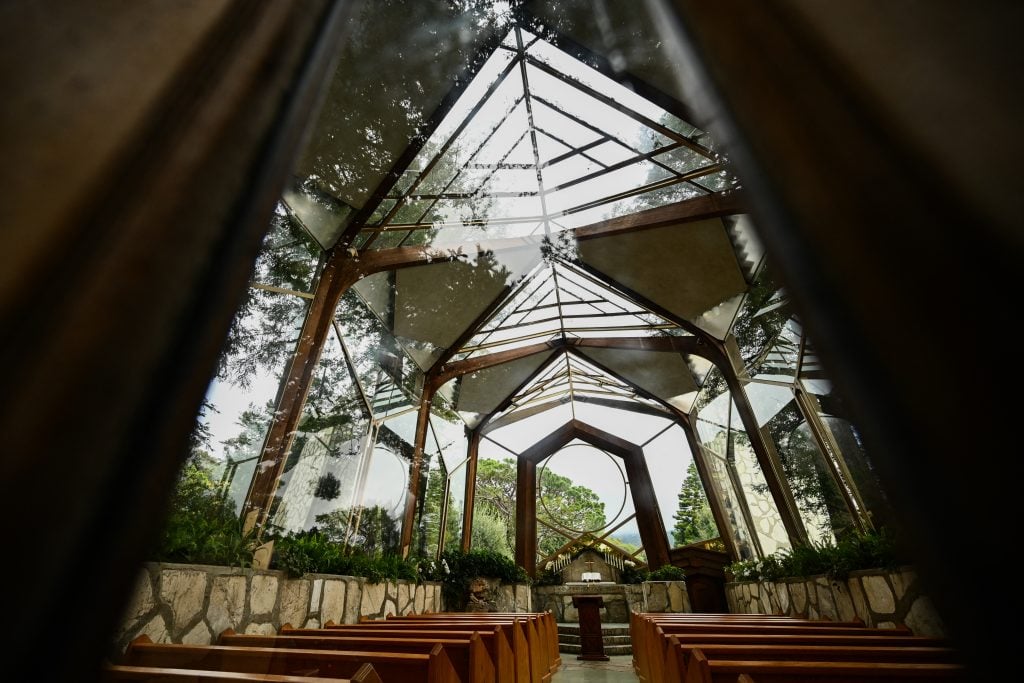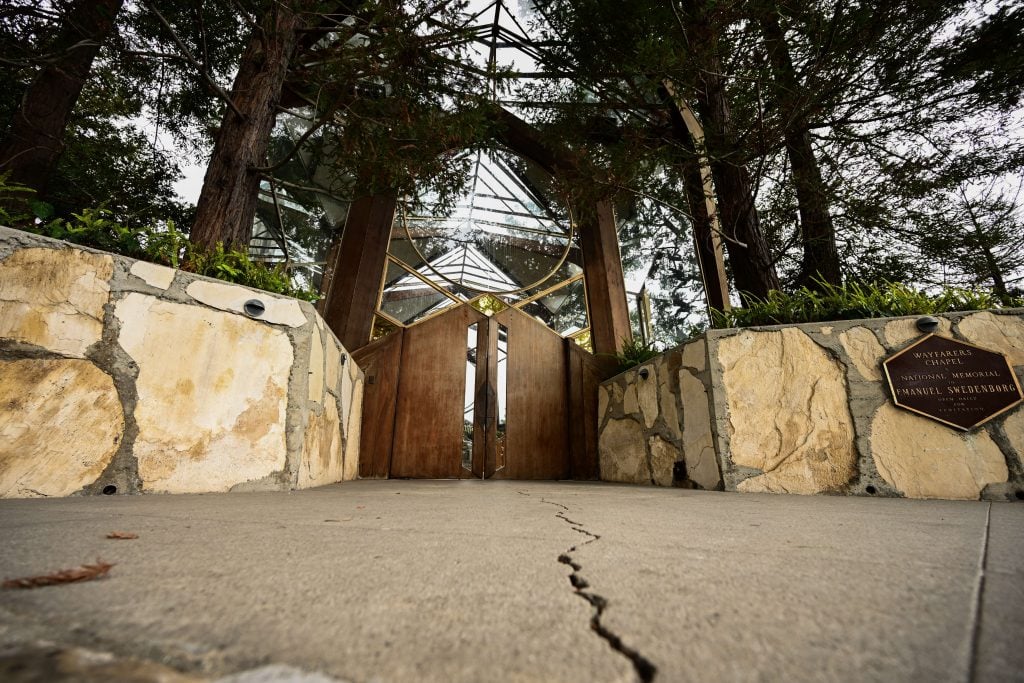Art World
Famed Glass Chapel Designed by Lloyd Wright Will Be Disassembled
The historic building is at threat of "accelerating destruction" due to land movement.

The historic Wayfarers Chapel, designed by Lloyd Wright in 1951, will be disassembled to protect it from a landslide and stored until the pieces can be reassembled.
Also known as the “Glass Church,” the structure was designed by Wright—the son of famed architect Frank Lloyd Wright—and has since become a popular venue for weddings and visitors seeking a serene atmosphere. It is registered as a National Historic Landmark, having earned the recognition in December 2023, just months before the closure.
The management of the chapel said in a statement on its website that it has partnered with a company called Architectural Resources Group to preserve as many pieces as possible for the “thoughtful rebuilding of the chapel” with input from the U.S. National Parks Service.
“The accelerating destruction of Wayfarers Chapel by the Portuguese Bend landslide complex is a looming tragedy felt by many. Our hearts go out to our many neighbors whose homes are threatened,” the chapel’s executive director Dan Burchett said.
The Portuguese Bend landslide is a large, active landslide area located in Rancho Palos Verdes, California. It began moving in 1956, affecting a region of approximately 240 acres and its pace appears to be quickening. The earth under the chapel is currently moving at about two feet or more a month—much faster than the roughly three inches in all of 2021.
The chapel’s glass panels have shattered, its metal framing has been torqued and bent, and the concrete floor is heavily cracked, prompting management to announce in February that the famed site would be temporarily closed to visitors.

Wayfarers Chapel is closed due to shifting and sliding land after heavy rains in Rancho Palos Verdes, California on February 16, 2024. Photo: Patrick T. Fallon / AFP via Getty Images.
Unfortunately, Katie Horak of the Architectural Resources Group said that many of the original materials in Lloyd Wright’s design cannot be replicated today such as the old-growth redwood glue-laminated timber and its blue roof tiles.
“With each passing day, more of this material is lost or irreparably damaged,” Horak said. “Our team is working against the clock to document and move these building components to safety so that they can be put back together again.”
The chapel’s management expects the deconstruction of the chapel to cost as much as $500,000 and is raising funds on GoFundMe for the restorations. As of publication, the chapel had raised $72,937 toward a goal of $250,000.
It has not yet been decided where the building will be reconstructed, but its management is also working to preserve a grove of mature redwood trees surrounding the chapel. And multiple other buildings on the campus, including one erected as recently as 2000, have been deemed a total loss in need of rebuilding. Altogether, the project is expected to cost $20 million.





